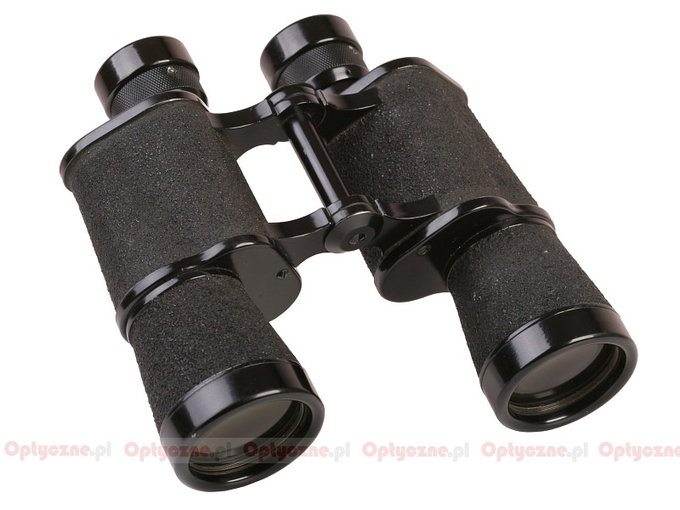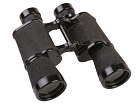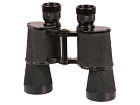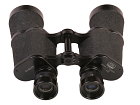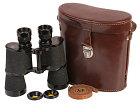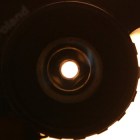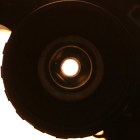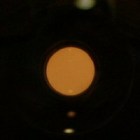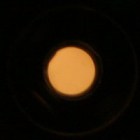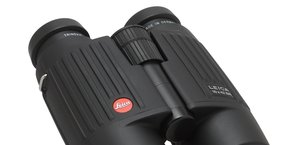PZO LP11x40
The binoculars’ appearance is classic, reminding you the Swarovski Habicht porro instruments with similar parameters. It features individual focusing system.
The buyer got green filters to be put on eyepieces, a leather case and a leather strap included in box.
It’s worth mentioning that the binoculars evolved in time. The first series didn’t feature fabric padding on the casing, only the so-called powder covering. Also the shape of the eyepieces’ eyecups changed significantly with the passing of time.
| Magnification | Lens diameter | Angular field of view | Prisms | Eye relief | Weight | Price |
|---|---|---|---|---|---|---|
| 11 | 40 | 110/1000(6.33o) | BaK-4/Porro | 11.4 mm | 650 g | 200 PLN |
Summary
Pros:
- very solid workmanship
- low coma and astigmatism
- good optical prowess
- wide range of the eyepieces’ gauge
- good quality of prisms
Cons:
- very yellow image
- high distortion and blur at the edge of the field
- no tripod exit
- truncated exit pupils
The design of this device comes from the golden era of wide-angle binoculars, when the wide field of view was the most important feature, even at the expense of the edge quality. In the case of the PZO LP11x40 you can notice it at first glance. The field of 6.3 degrees with the magnification of 11 times requires using eyepieces with the apparent field of view of over 66 degrees! No mean feat, taking into account the fact that the physical dimensions of the eyepieces in question are rather small.
The classic and solid casing of the tested instrument is in stark contrast with the currently produced Chinese equivalents. The LP11X40 is very comfortable to hold and to use. The focusing moves smoothly and efficiently even when sub-zero temperatures set in; in the same conditions the grease of Chinese products froze completely. Even a significant pressure on the eyepieces don’t cause any bending or the slightest defocusing. The binoculars are constructed in such a way that they can be used by a child and by a big adult alike because of the huge eyepieces’ gauge, reaching from 40.5 to 75.5 millimeters. Many prestigious pairs of binoculars can only dream about such a result..
Also inside the instrument everything is as it should be: no scratches, no dust, beautiful dark and matt blackening. The shiny housing of the prisms spoils this picture a bit – most probably it is the main source of inner flares.
The fact that the binoculars can be completely disassembled is worth emphasizing too – you can take it to an optics specialist at any given moment and he will be able to improve its properties. The currently produced Chinese devices can only dream of such a feature as the objectives, prisms and eyepieces are usually glued permanently to the casing and any interference ends up in total destruction…
Optically the instrument can be placed above average. Perfect collimation, coma and the astigmatism kept at a low level – these are results of diligence of Polish optics specialists and technicians when it comes to the build quality and the right position of elements within the optical axis. Also the chromatic aberration doesn’t disturb you although with such a small instrument and so yellow an image it is not a huge achievement.
The correct binoculars’ construction, the good quality of glass and one-layer fluoride coatings on almost all air-to-glass surfaces provide very good transmission level for that time.
The binoculars has some disadvantages, though and they are serious. Huge field of view was reached at the expense of very high distortion and visible blur at the edge. The yellow image, produced by all Eastern Block instruments, is already legendary and the PZO LP11x40 is not an exception to this rule. Yellow glass along with layers which transmission reaches its peak for the green-yellow colour give you the horribly yellow image indeed!
Individual focusing system often causes significantly big minimum focus distance which, in the case of the PZO, amounts to over 7 metres. The fans of bird-watching won’t be pleased for sure…
The designers also didn’t anticipate the possibility of connecting the binoculars with a tripod. Pity...
What conclusions can be drawn from our test? Taking the price into account they remain quite positive for the PZO LP11x40. Currently you can buy it for 25-80 EURO in second-hand shops, on markets and Internet auctions. Adding the cost of a visit to an optics specialist, often compulsory, this instrument in good order will cost us about 50-100 EURO. For such an amount of money we can buy only cheap Chinese binoculars which main advantage is the whiteness of the image. In other categories the PZO either is significantly better than them or at least keeps similar level; when it comes to the build quality it simply knocks Asiatic products out .
To sum up if you are able to forgive the PZO LP11x40 its yellow image this product is really worth our consideration. It’s a shame the Polish Optical Industries (PZO) ceased the production. It would be enough to produce the same model ordering pure translucent glass e.g. in China, then put modern anti-reflection coatings on it and we would have a native small binoculars market hit.




